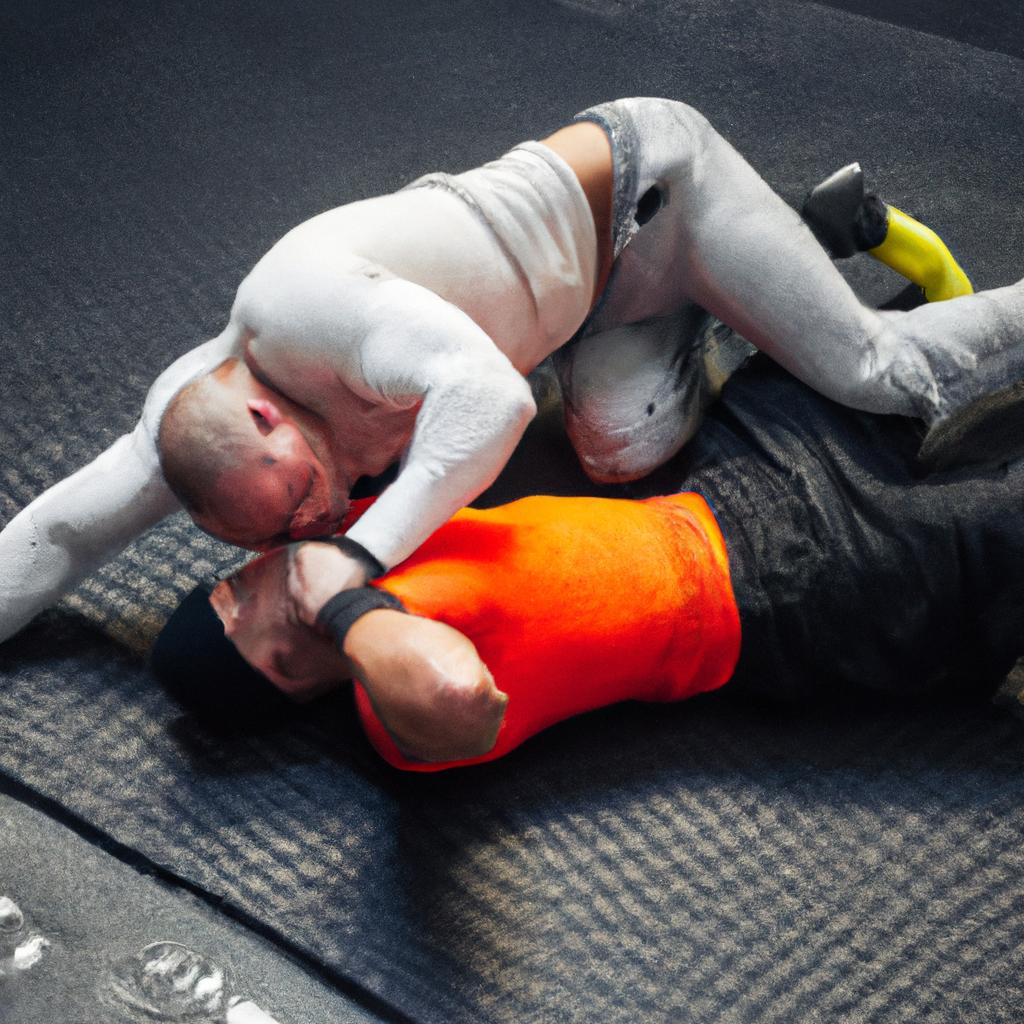**”Sport-Specific Conditioning: Developing Strength and Endurance for MMA Fighters Through Targeted Drills”**
Sport-Specific Conditioning: Developing Strength and Endurance for MMA Fighters Through Targeted Drills
Mixed Martial Arts (MMA) is a sport that demands a unique blend of strength, endurance, and agility. As fighters prepare for bouts, one crucial aspect of their training is sport-specific conditioning. This blog post will delve into the importance of targeted drills in developing the necessary physical attributes for MMA fighters, offering insights on exercise advice, nutrition tips, health benefits, and more.
The Importance of Sport-Specific Conditioning
Understanding MMA Demands
MMA combines techniques from various martial arts, including boxing, Brazilian jiu-jitsu, wrestling, and Muay Thai. Therefore, fighters must develop a wide range of physical attributes, including explosive power, cardiovascular endurance, and flexibility. Consequently, generic training programs may not yield the same results as tailored, sport-specific conditioning routines.
Tailoring Conditioning to the Sport
Moreover, sport-specific conditioning focuses on enhancing the exact skills needed in the ring. For instance, while traditional weightlifting may build overall strength, it does not account for the explosive movements required in striking or grappling. Consequently, MMA fighters benefit from drills that mimic the actions they will perform during competition, allowing them to develop strength and endurance more effectively.
Targeted Drills for Strength Development
Plyometric Exercises
Plyometric exercises, such as box jumps and medicine ball throws, significantly improve explosive power. These drills engage fast-twitch muscle fibers, which are essential for delivering powerful strikes and quick movements. Therefore, incorporating plyometrics into a fighter’s conditioning routine can lead to enhanced performance in the octagon.
Strength Training with Functional Movements
On the other hand, strength training that focuses on functional movements, such as squats, deadlifts, and kettlebell swings, is crucial. These exercises not only build muscle but also improve core stability and overall body mechanics. Furthermore, fighters should incorporate compound movements with free weights to simulate the dynamic actions they will perform during bouts.
Building Endurance Through Targeted Drills
High-Intensity Interval Training (HIIT)
High-Intensity Interval Training (HIIT) has gained popularity in recent years, and for good reason. This training method alternates between short bursts of intense activity and periods of rest or lower intensity. Consequently, it effectively boosts cardiovascular endurance, which is essential for fighters who need to maintain energy levels throughout multiple rounds.
Sport-Specific Sparring Drills
Additionally, sport-specific sparring drills can significantly enhance endurance. Engaging in controlled sparring sessions allows fighters to practice techniques while working on their stamina. Moreover, varying the intensity and duration of these sparring sessions can simulate the demands of an actual fight, helping fighters build the endurance needed to last the entire duration of a match.
Nutrition Tips for Optimal Performance
Fueling for Strength and Endurance
Proper nutrition is fundamental for MMA fighters looking to enhance their conditioning. Therefore, a balanced diet rich in lean proteins, complex carbohydrates, and healthy fats should be prioritized. For instance, foods such as chicken, quinoa, and avocados provide the necessary nutrients for muscle growth and energy.
Hydration and Recovery
In addition to a balanced diet, adequate hydration is crucial. Fighters often lose significant amounts of fluid during training, particularly in high-intensity workouts. Consequently, they should prioritize rehydration with water and electrolyte-rich drinks after training sessions. Furthermore, incorporating recovery foods, such as protein shakes or fruit smoothies, can aid muscle repair and bolster performance.
Health Benefits of Sport-Specific Conditioning
Enhanced Performance
Implementing sport-specific conditioning drills leads to improved performance in the octagon. Fighters who focus on targeted drills often find themselves quicker, stronger, and more agile. Therefore, they can execute techniques more efficiently and effectively in the heat of competition.
Injury Prevention
Moreover, sport-specific conditioning can reduce the risk of injuries. By focusing on the muscles and movements that are most relevant to MMA, fighters can strengthen their bodies in a way that protects against common injuries. Consequently, this preventative approach allows them to train consistently and compete at their highest level.
Conclusion
In conclusion, sport-specific conditioning is an essential component of training for MMA fighters. By incorporating targeted drills that develop strength and endurance, fighters can enhance their performance and reduce their risk of injury. Moreover, a focus on proper nutrition and recovery will only further improve their training outcomes. Therefore, if you are an MMA fighter or aspiring to become one, consider integrating these conditioning principles into your training regimen. With dedication and the right approach, you will be well on your way to achieving your fighting goals.
FAQ
What are the key benefits of sport-specific conditioning for MMA fighters?
Sport-specific conditioning offers numerous benefits for MMA fighters, including enhanced performance, increased strength and endurance, and reduced risk of injuries. By focusing on targeted drills that mimic the movements and demands of a fight, fighters can improve their agility and efficiency in executing techniques, ultimately leading to better results in the octagon.
How can nutrition support an MMA fighter’s conditioning program?
Nutrition plays a crucial role in supporting an MMA fighter’s conditioning program. A balanced diet rich in lean proteins, complex carbohydrates, and healthy fats provides the necessary nutrients for muscle growth, energy, and recovery. Additionally, proper hydration is essential, as fighters often lose significant fluids during intense training sessions. Incorporating recovery foods, such as protein shakes or fruit smoothies, can further aid in muscle repair and enhance performance.
What types of drills should MMA fighters focus on for strength and endurance?
MMA fighters should focus on a variety of targeted drills to develop strength and endurance effectively. For strength development, plyometric exercises like box jumps and medicine ball throws are beneficial, as well as functional strength training movements such as squats and deadlifts. For endurance, High-Intensity Interval Training (HIIT) and sport-specific sparring drills that simulate fight conditions are essential for maintaining stamina throughout a match.















Post Comment